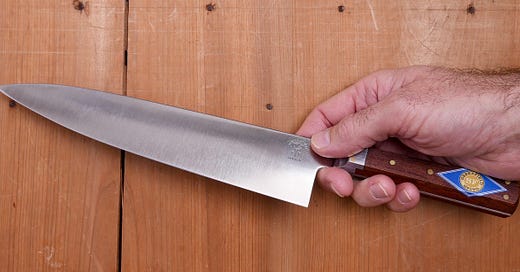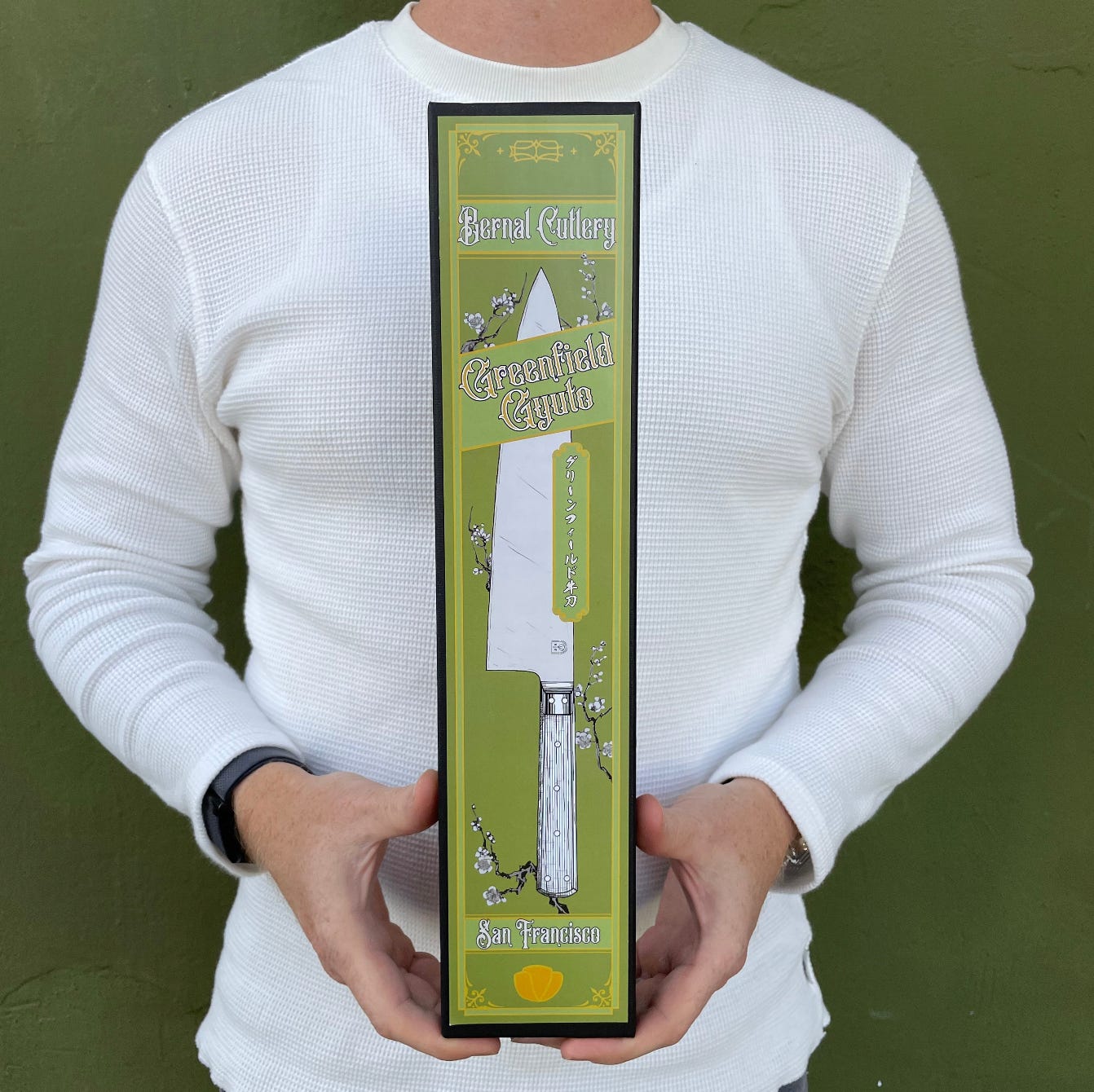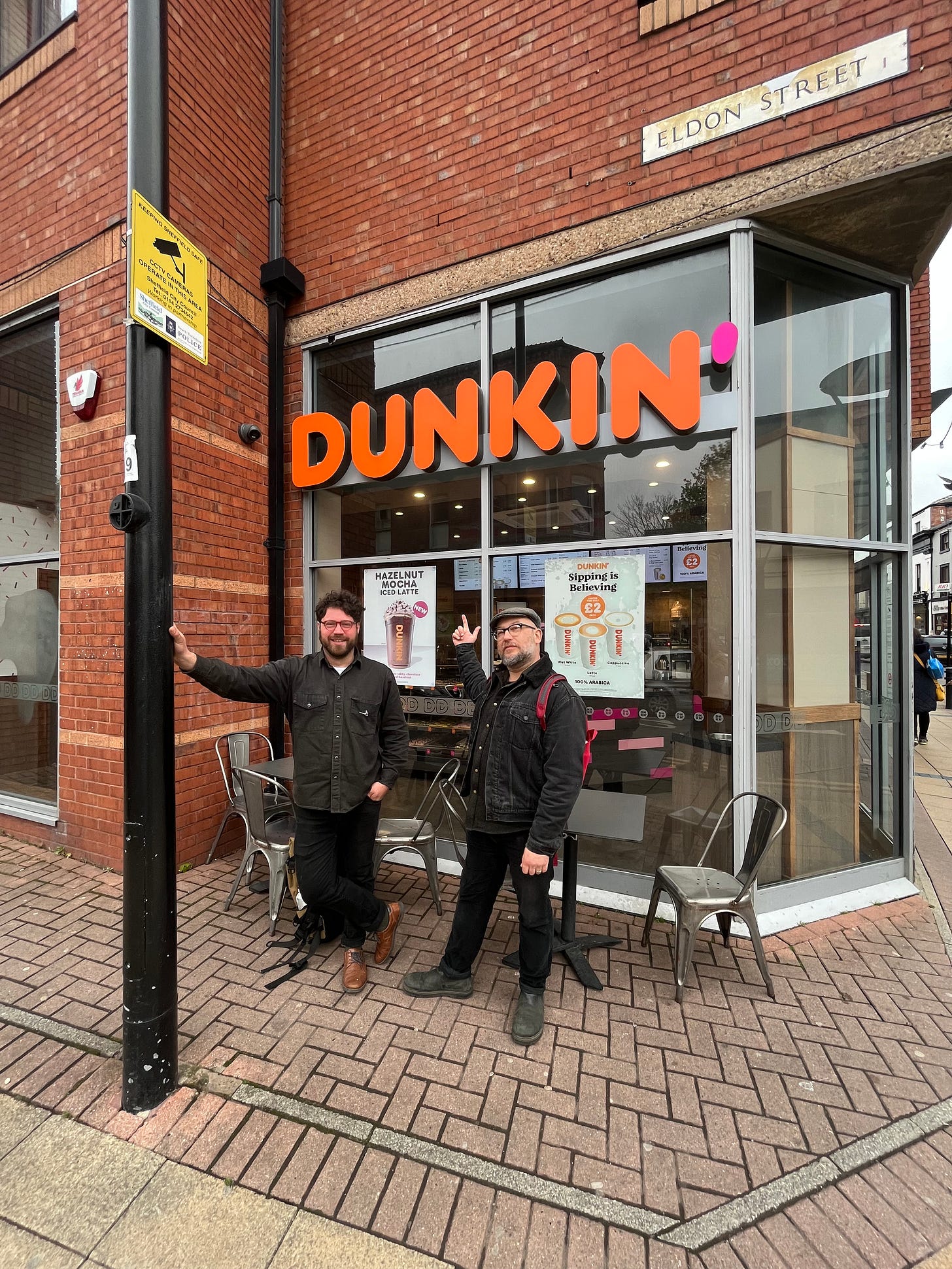You can pre-order The Greenfield Gyuto here. These knives are a limited production of 200. Each knife will be numbered.
For many years, the idea of making a knife percolated in my mind; it always seemed 4 steps out of reach, so it lived in the junk drawer of my consciousness.
The last few years have seen me rummaging around in those junk drawers a bit, not out of a lack of other pressing things but maybe because of the realization that if I don’t do things I’d like to do, another decade will pass by, and there might never be a ‘good time’ to do them. I have learned that when an opportunity presents itself, it’s good not to argue sometimes and that productive procrastination can be just as good a form of motivation.
Elias Sideris
We immediately talked about old knives when Elias Sideris came into the old Guerrero St Bernal Cutlery. He lived in New England and was familiar with the old knives we had at hand. It was a J Russell Green River knife that our first conversation was about. It was great finding someone interested in the same niche knife history stuff I was and could learn from. Shortly afterward, Eli asked my opinion on a stamp he was making for his own Astral brand, and I thought it was brilliant, a kind of house-shaped lantern deep set in a square stamp; of course, I followed the knifemaking he was doing. I really liked his aesthetic and appreciated his nods to old knife-making. It was super inspiring seeing someone integrate this history into knife-making without doing reductive LARPy one-liners. After he moved from Greenfield, Mass, to the Bay Area during the pandemic, we got back in touch, and I was able to score a few of his Astral Brand chef knives for the shop, and they sold immediately. I also got to keep one. I couldn’t help but use it; it was well worth devaluing it; it's a gem.
The Kaiten
Later, Eli helped us build a large-scale Japanese grinding machine with an enormous stone wheel I had gotten from Japan that came with some old machine components. I thought it would be a relatively simple thing, but I am a crap fabricator. I knew this was a project I should get someone competent to help with. To put the context on how I best work, I got into sculpture in a previous incarnation in my late teens and early 20s. Everything I did was totally reductive; I carved everything, no building, no welding. This is how I am. If I build something that requires measuring and exact fitting joints, it looks like those experiments of spiderwebs made by spiders on different drugs, and not the ones where everything is tight and exact but unfinished, the really messed up ones. It really makes sense that sharpening appeals to me as it is also completely reductive, only removing metal to shape and form new edges.
Eli did a great job on the Kaiten Mizu Toishi grinder, milling the old cast iron hubs so that the wheel has no vibration when it runs, and I can reduce knives to my heart's content. Here, you can see a short video compilation of Eli’s work from a social media post last year.
Undertaking Knife Making
It might sound obvious, but you never know what it’s like to work with someone until you work with them, and it was great working with Eli. After some discussions, he mentioned that he was interested in the production side of knifemaking, which is a bit different than making one-of-a-kind pieces, so the seed was planted to consider what we might make together. Around this time, I had the opportunity to buy a collection of knives from local sculptor and fellow flea market regular Don Rich, who had, sadly, recently passed away. I knew Don, and several years back, we had done a lot of trading. He was especially interested in knives from the J. Russell Green Works of Greenfield, Mass., A. J. Jordan of Sheffield, England, and 19th-century San Francisco knives by Will & Finck and Michael Price. I had a bin of knives to trade with Don, and when it would fill up, I would go out to his foundry in West Oakland and look for old Sabatiers or other old culinary knives he was less interested in, and I knew I could transform into bags of groceries and paid bills. He had massive old map flat files filled with knives, and it was a wonderland. Years later, in the summer of 2022, his wife Megan and daughter Katie had placed all the knives in plastic bins. I gathered them all up in the emptied-out kitchen downstairs from where the flat files had been and where Don would make hundreds of pies every year for Thanksgiving and give them to friends. They were really, really good pies. I appraised the knives, I remembered trading some of the knives years back. There was more of the secondary stuff one keeps when collecting that is less important but hard to get rid of, and more importantly, the prized finds that I remembered looking at with Don and getting to know about for the first time. Megan and I settled on a price for the lot. It was more than I could afford by sensible accounting, but I felt responsible for seeing them through and ensuring that Megan got a fair price. I knew that the vultures must have been circling them and that somehow it would work out for me to drain the coffers for a minute to ensure they got put to good work.
As Eli and I were hashing out how we would make a knife that had that old combination of hand work and industrial process, we were hashing out different ways to integrate a forged construction. We kept running into a few snags and found ourselves coming back to the necessity of forging on the first design that we did. From a purely functional standpoint, with many of the steels available, it wasn’t completely necessary to forge to get a great performing blade. For the first model, it definitely made sense to consider a stock removal knife with blades cut from sheets of high-quality steel.
After going over dozens of old knives that Eli and I have separately collected over the years and a bunch from the Don Rich collection, we kept returning to a few approaches to construction that seemed super compelling and specific to New England. It went without saying that a chef knife was definitely the first one we would do as it is the central knife in so many kitchens; the old-style Kanto Gyuto has always been a kind of North Star for me regarding blade geometry; thin (like many old hand-made culinary knives from all over the globe) and with a tip with a minimal curve to it, formed from the spine coming to meet the edge.
I had a blade edge geometry that I was fixed on after doing some experiments and had done some collaborations with a small smith in Tosa, Japan. I really liked the outline and wanted to do it in a thinner single-steel construction, so we tried it. Eli came up with a beautiful, straight-sided handle, slightly flared at the heel like the old Massachusetts knives we liked, and with a milled pinned bolster that held the scales in. I’d like to say we tried a bunch of other designs. Still, this one really nailed what we were after, and only slight modifications to the length of the neck between the heel of the blade and handle, as well as handle thickness, were changed after working with prototypes in different steels.
Once some of the prototype Greenfield Gyutos were in hand and used, the idea that this knife could have been made in New England for the Japanese market in the late 19th century didn’t seem implausible. While it didn’t happen, it could very well have that in the 1870s or ’80s as Japanese culinary culture was going through the massive upheaval of the Meiji period, bringing beef and pork into the Japanese diet and the Western chef knife along with it that a Japanese blacksmith could have traveled to the knifemaking capital of the United States in Massachusetts. If this blacksmith had come to the USA to learn how to forge and grind the Western chef knife instead of going to Europe, Japanese sensibilities of knife use could have been introduced, as well as the opportunity to supply this new market.
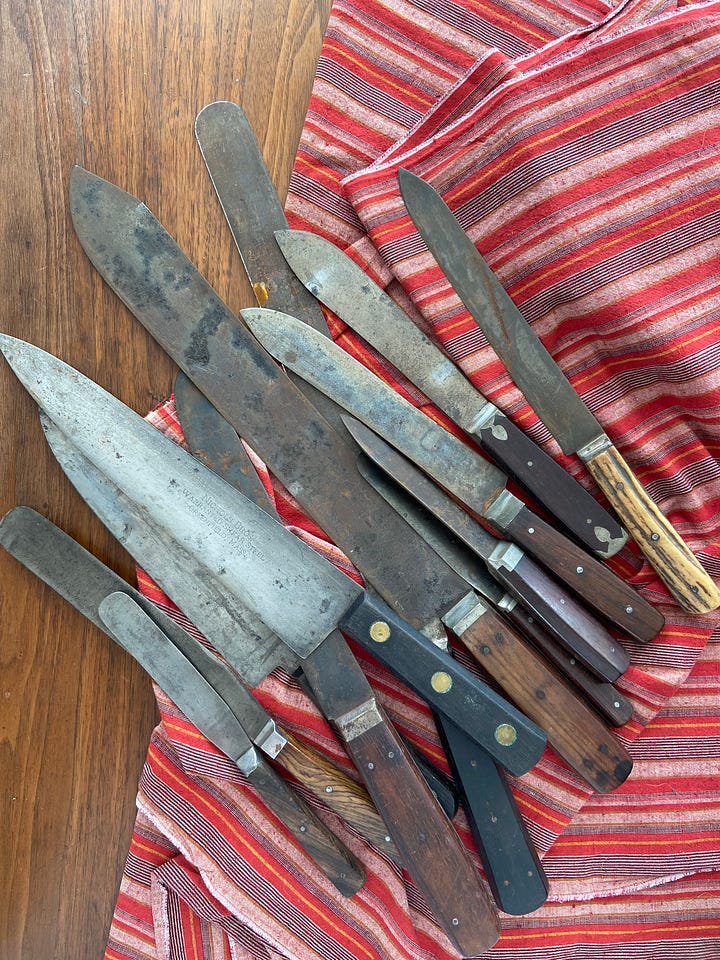
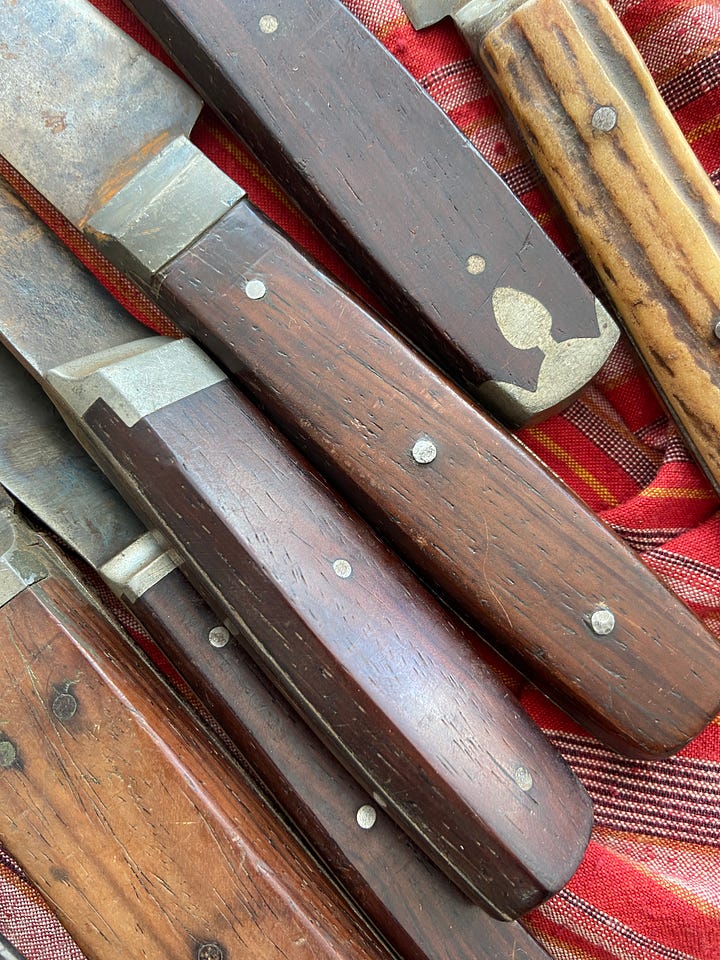

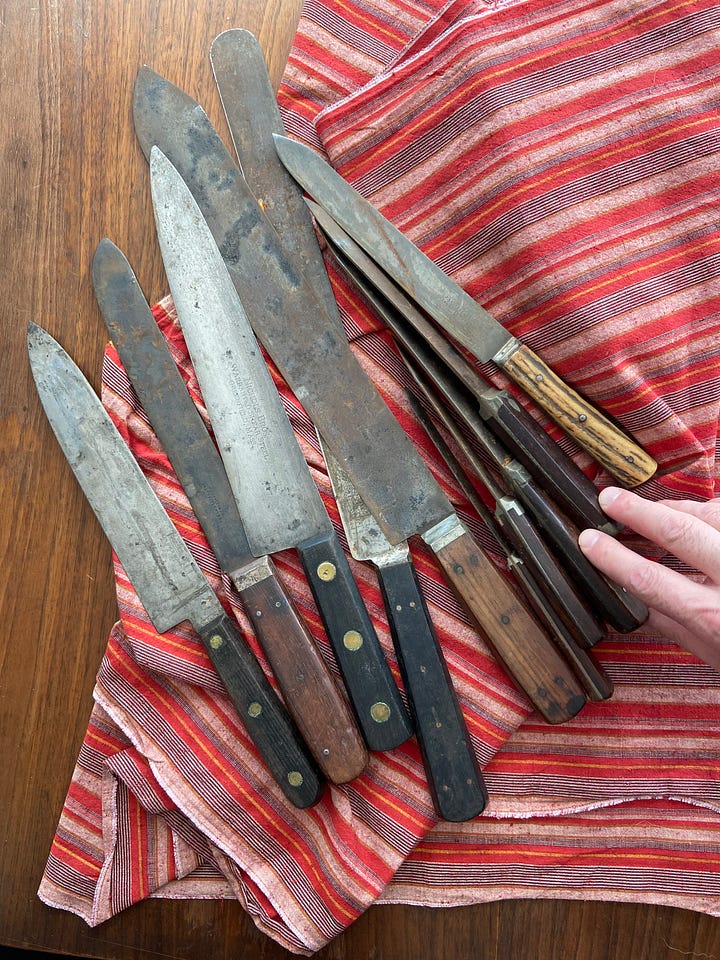
While most American knife makers were focused on the massive and expanding American market and wresting it from domination by the British and Europeans, their designs in the late 19th century were incredibly promiscuous. The Americans were liberally copying designs from the British (naturally, with Sheffield dominating imports) and from the French, who were influencing the Germans who were in the late 19th century, massively increasing their industrial capacity and building a huge skilled labor pool. Sheffield, Thiers, and Solingen all rode on each other's coattails with successful changes in how people cooked in the kitchen and ate at the table. New methods of production utilizing more efficient techniques like the drop forge were also driving design innovation.
Once we had a little riff going about the alternative history of our knife, the issue of packaging design really opened up. My wife and Bernal Cutlery co-conspirator Kelly had been collecting books on Japanese package design from the 19th and early 20th century that she had been using with our design team, Marco Antoniolli and Angus Haller. They had come up with some really beautiful packages with Marco’s illustrations, and going in this vein, the Greenfield Gyuto box was on its way with the addition of some 19th-century New England knife boxes.
While the influence from Japan to the West still had another century to hit (and, oh, how it has), it is interesting to ask why more Japanese culinary innovations didn’t spread along with the fascination with Japanese design in the ‘Japonisme’ craze of the 1860s and ’70s which introduced Japanese motifs in gardening, architecture, art, etc. With the Greenfield Gyuto we posit that it not only could have happened but did, albeit a century and a half later. With this knife, we are looking at the chef knife through a 19th-century lens and applying today’s cooking sensibilities, which in many ways have stayed consistent with the demands of professional cooks over the centuries.
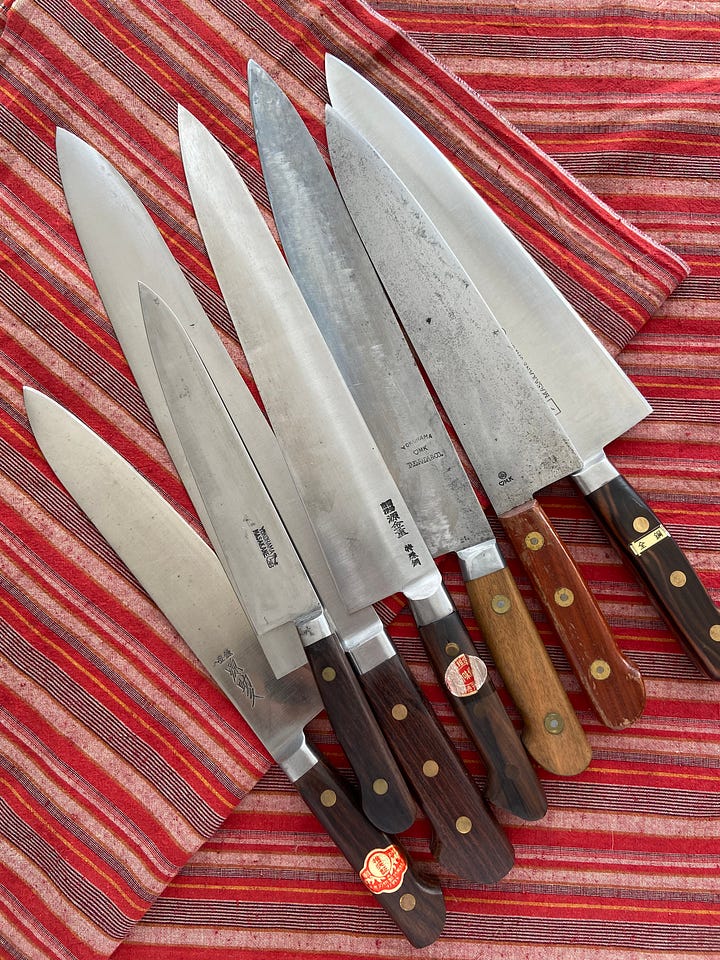
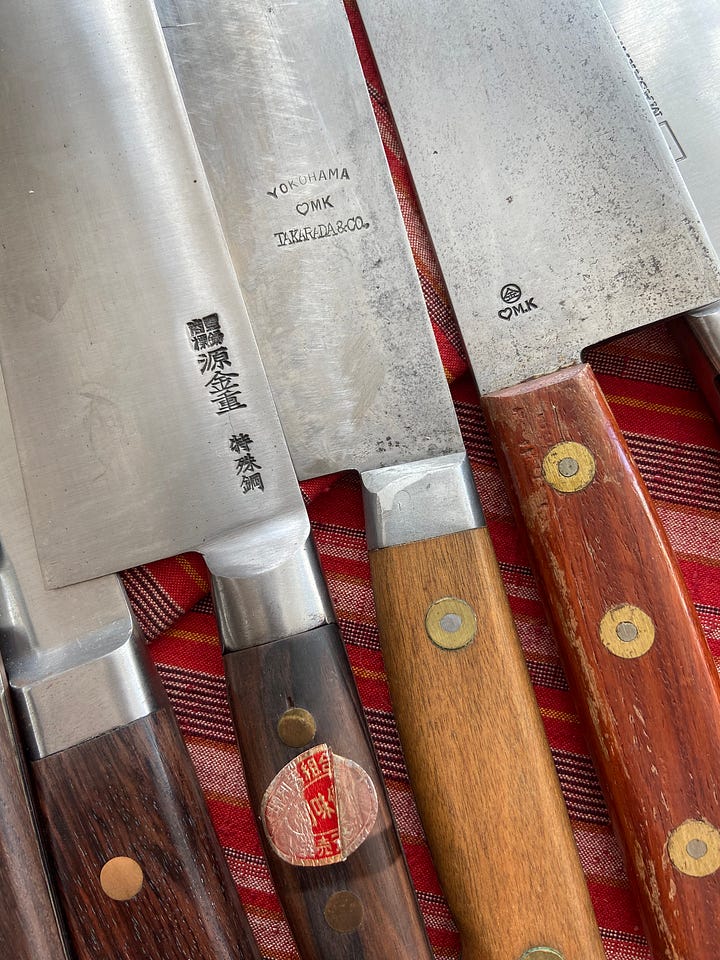
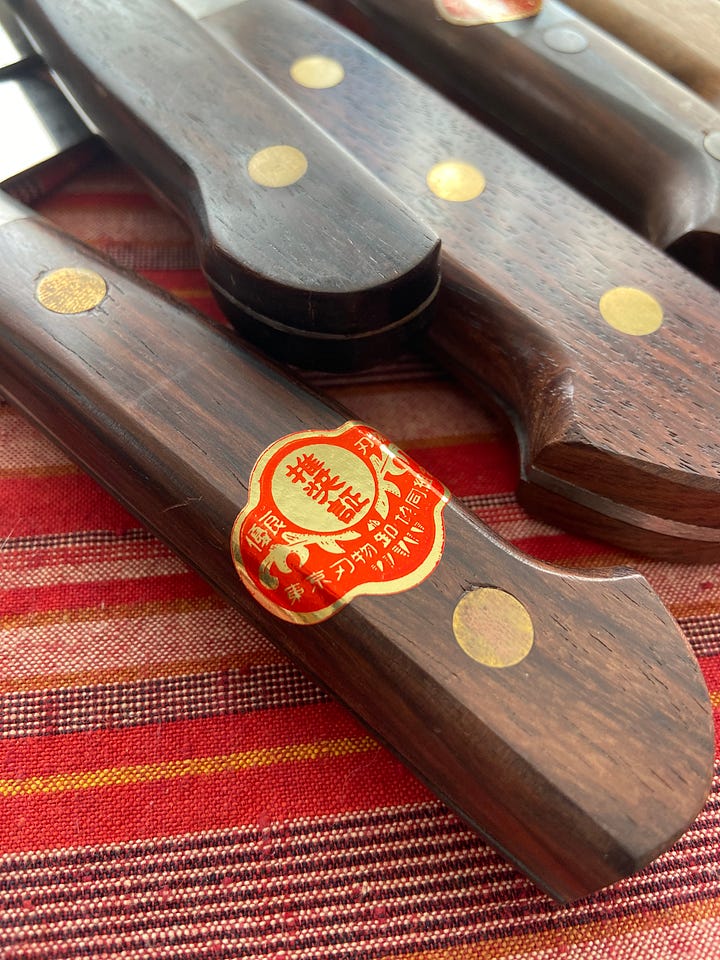
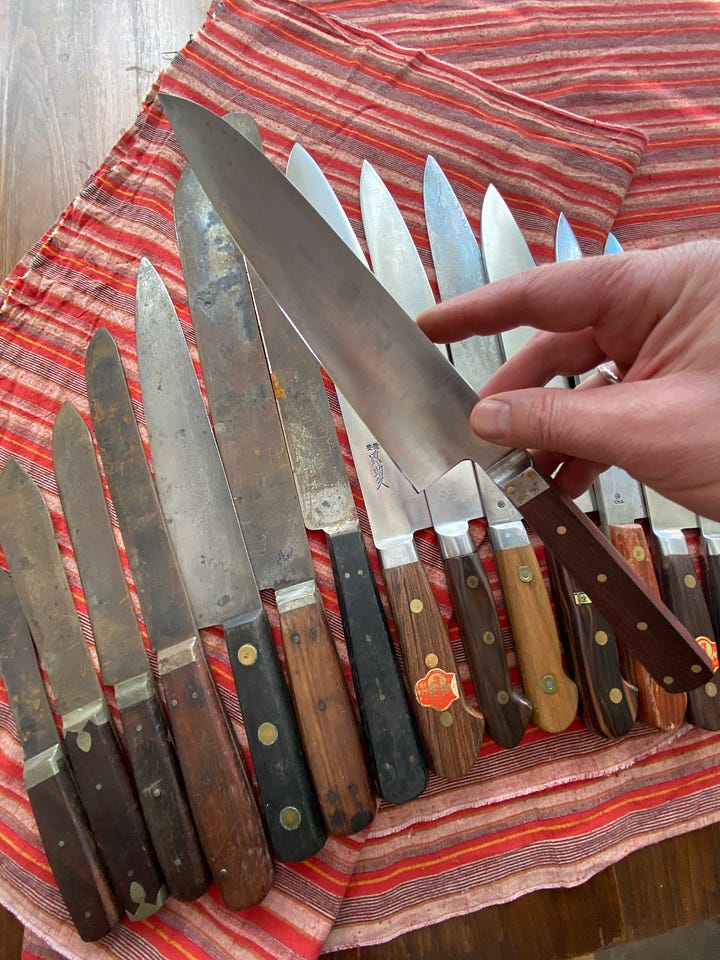
Looking at this knife, I am immensely proud, not because I’m such a genius and figured this all out alone but because I found myself a conduit to keep this history alive. A knife seems made from hard, unyielding materials, but once you get to know them, they are immensely fluid, slippery little beasts that seem to take on their own lives. I’m super grateful to be able to do this with these super talented people and of course, these knives that found me.


